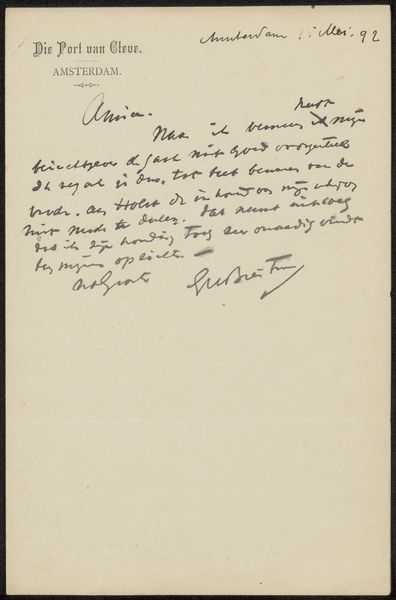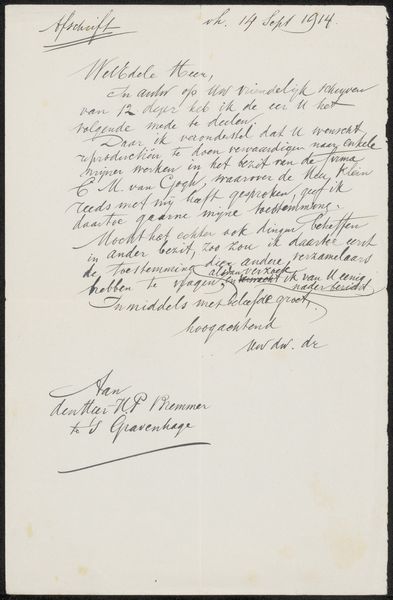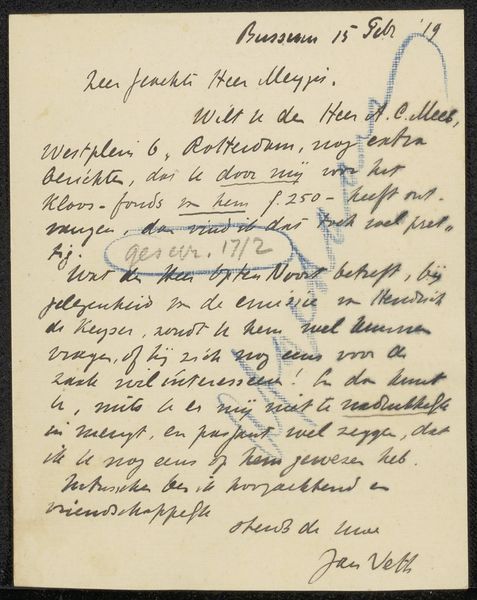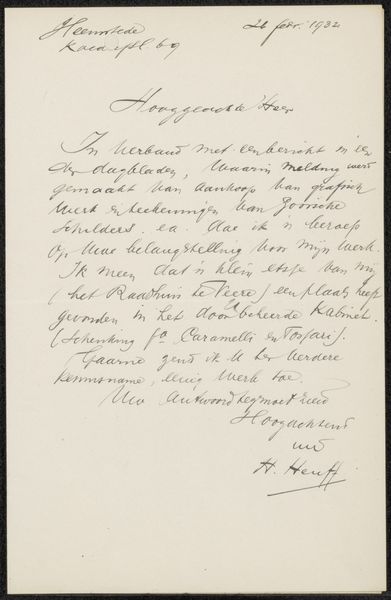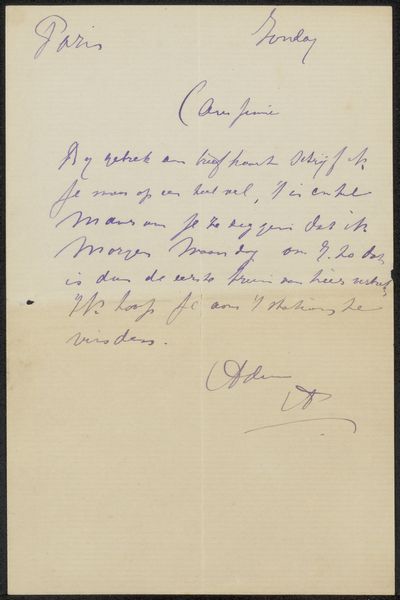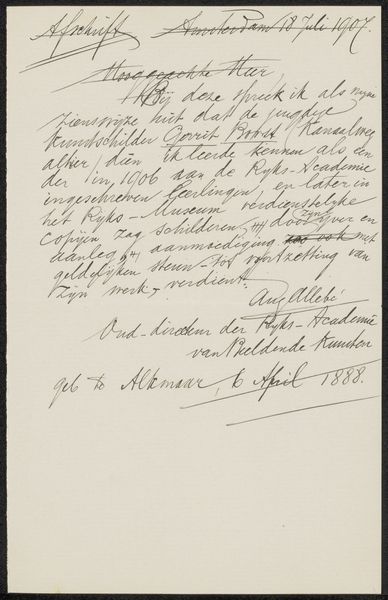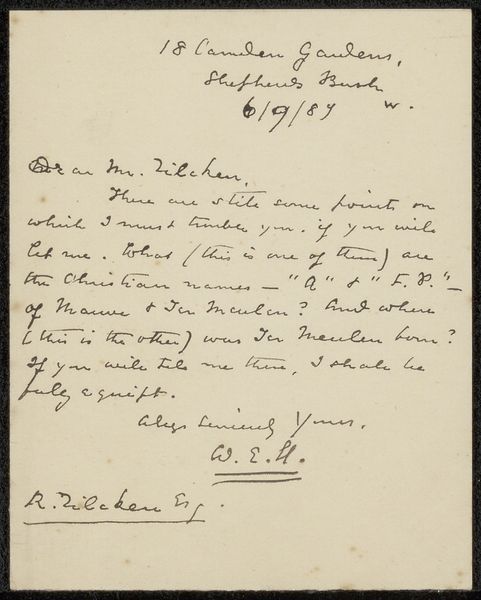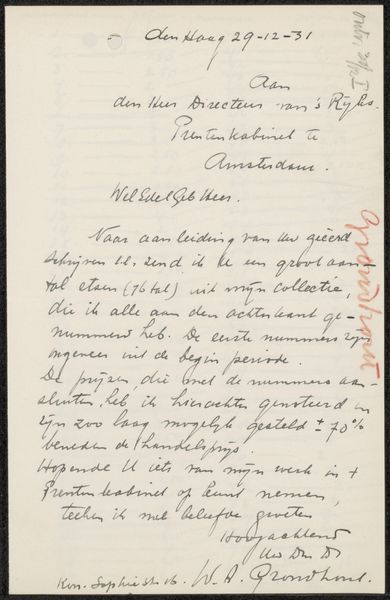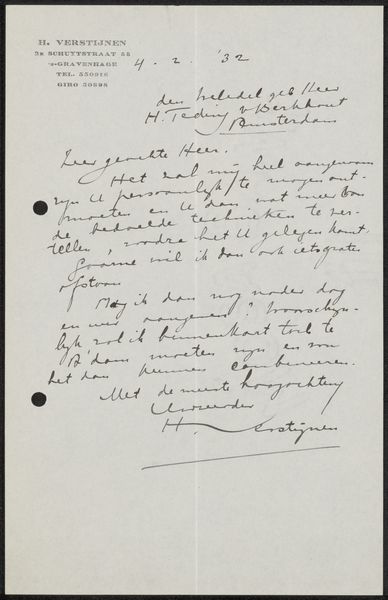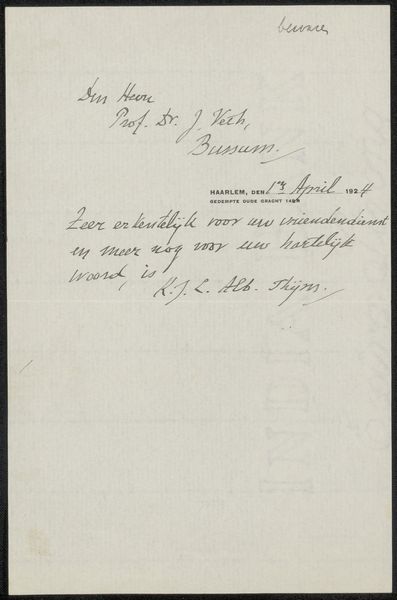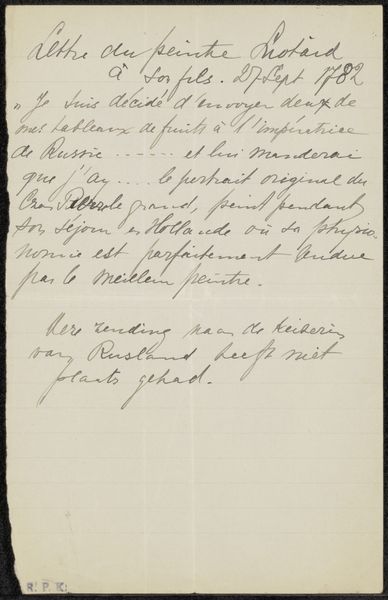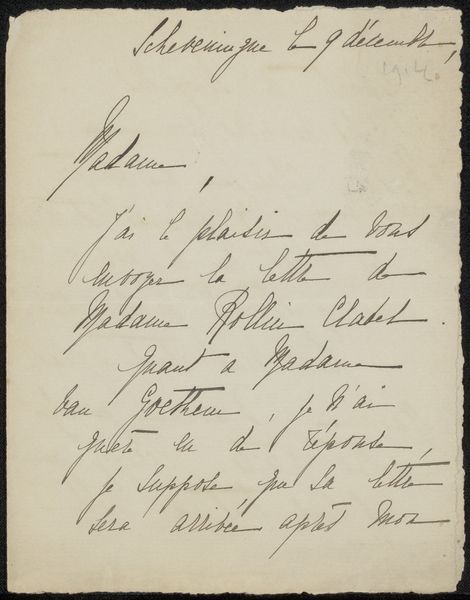
drawing, paper, ink, pen
#
portrait
#
drawing
#
hand-lettering
#
hand drawn type
#
hand lettering
#
paper
#
personal sketchbook
#
ink
#
hand-drawn typeface
#
pen-ink sketch
#
ink and pen line
#
pen work
#
sketchbook drawing
#
pen
#
sketchbook art
#
modernism
#
calligraphy
Copyright: Rijks Museum: Open Domain
Curator: This is "Brief aan F.E. Posthumus Meyjes," a drawing, probably from 1919, by Jan Veth. It's currently housed in the Rijksmuseum. The medium involves pen and ink on paper. Editor: It feels intensely personal, like finding a treasured note tucked away in a dusty old book. The handwriting dances across the page; there is an energy there, a life. Curator: Veth was a prominent figure, particularly known as an art critic and portraitist. Examining his drawings like this helps us understand not just his finished works, but also his process, the material conditions of art making itself. The immediacy of ink on paper contrasts with the labor and scale required for his more renowned paintings. Editor: There's something deeply satisfying about the constraints. The limitations of pen and ink force a raw honesty, don't you think? Every scratch, every hesitation becomes part of the narrative. Curator: Exactly. Consider the social context. This was likely a personal communication, a working draft rather than a formal artwork intended for public display. Yet, here it is, preserved and presented, challenging our definitions of "art." The text itself is interesting—it appears to be a letter, potentially regarding financial matters, as there is a mention of 9000, maybe referring to money or other quantifiable resources. Editor: Nine thousand what, I wonder! It does have that practical feel—the pragmatic scribble, then flourishes towards the end, like his signature freed the artist up. Did it serve any artistic practice besides conveying information? What was the value of hand writing instead of typing at that time? Curator: These considerations are central to a materialist analysis of art. The pen, ink, and paper are tools that enable the artist to communicate and record personal thoughts, negotiate material exchange, blurring the lines between utility and aesthetics. Editor: A tiny portal into another person's mind, through the filter of humble materials. You see social fabric; I see… well, I see a friendly, quirky spirit reaching across time. Curator: It's interesting how focusing on the object itself leads us back to the human element—both in the making and in the viewing. Editor: Indeed. It makes me want to rummage through my old notebooks now. You never know what forgotten stories they hold.
Comments
No comments
Be the first to comment and join the conversation on the ultimate creative platform.
